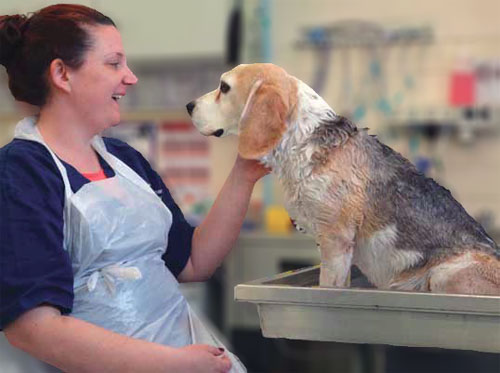
What are we looking for in a blood test?
Routine blood testing typically assesses haematology (red and white blood cells), biochemistry (all the blood products associated with normal bodily functions, including liver and kidney function) and electrolytes. There are blood tests which look for particular problems as they arise, such as hormonal imbalances or clotting problems. Some health conditions can only be detected by blood testing, making this a very useful part of any check-up.
Which pets should have blood tests?
Blood testing is recommended for any pet that is feeling unwell or a little off-colour. Routine monitoring is also recommended for senior animals, those on long term medications and for any pet undergoing general anaesthesia. Recent scientific research has recommended performing regular blood testing in young healthy animals. Every animal is different, so doing this allows us to get an idea of what normal values to expect for each pet as an individual. This is particularly useful for detecting early changes (for example, onset of kidney disease) and allowing prompt investigation and treatment of issues as they arise.
How is blood collected?
Most pets tolerate blood collection well. Your vet or nurse will clip a section of hair away from the neck or leg, clean the skin and collect blood with a needle and syringe. Pets who are anxious about the process often find comfort in lots of cuddles, treats and gentle handling. A small number of animals may need to be sedated for collection, but your vet will assess the pros and cons of performing the test if this is the case.
When should a blood test be performed?
For young healthy animals, the goal is to obtain 3 blood tests before becoming ‘middle aged’ (this age varies between breeds, but as a rough guide is between 6-8 years). Yearly testing is recommended for senior pets. Animals on long term medications often need 6 monthly testing but this will depend on the medication and your vet will guide you as to what is appropriate. Testing is recommended in all animals prior to general anaesthesia as in some cases we may decide to alter our anaesthetic protocol in relation to the blood results.
Where are blood tests performed?
We have state of the art in house blood machines, which allows us to run many tests on the spot with a quick turnaround time. Some tests do however need to be sent to external laboratories and may have a delay of a couple of days for results.
Your vet will advise you if your pet is due for a blood test. If you have any concerns about your pet’s general health and wellbeing, please contact us for further assistance.











